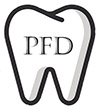Tooth Extractions
Before advances in modern dentistry, tooth extractions were commonly performed on teeth that were damaged from advanced decay or bacterial infection. Now that many people get regular exams and cleanings that preserve the health of the teeth, extractions can mostly be avoided. In some cases, such as an impacted wisdom tooth or the need to make room for orthodontic work, an extraction must be performed. Extractions done to resolve problems caused by decay or damage are now considered a last resort by most dentists.
The Tooth Extraction Process
An extraction is when a tooth is completely removed from its jawbone socket. There are two different types of extractions.
- Simple extraction. This is the removal of a visible tooth without the need to resort to surgery. The tooth is easily grasped and pulled out by the dentist.
- Surgical extraction. This method is used when the tooth is impacted or is otherwise difficult to reach. It is also performed when a simple extraction results in a tooth cracking or breaking below the gum line.
Extractions are uncomfortable, and the dentist will ensure the area is thoroughly numbed before starting the procedure.
After a Tooth Extraction
Pain, soreness and bleeding are common after a tooth has been extracted. While bleeding usually stops within 12 hours, pain can continue for up to three days. The patient can use over-the-counter pain relievers to reduce discomfort. The extraction site should not be touched, and the patient should follow a soft diet for the first day. By the second day, warm salt-water rinses can be used for bacteria reduction and to keep the mouth clean while the healing the process begins.
While an extraction may have to be performed in certain circumstances, patients are encouraged to do everything possible to save their teeth.

